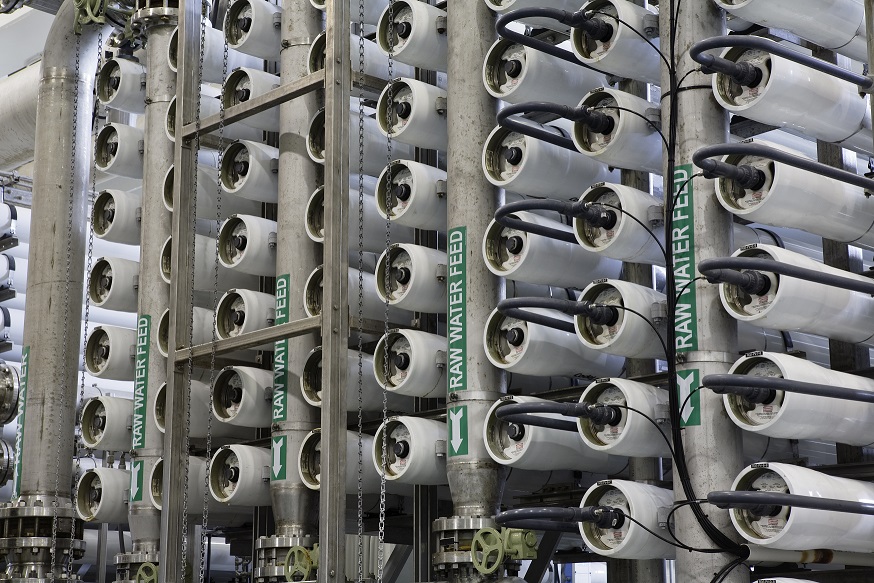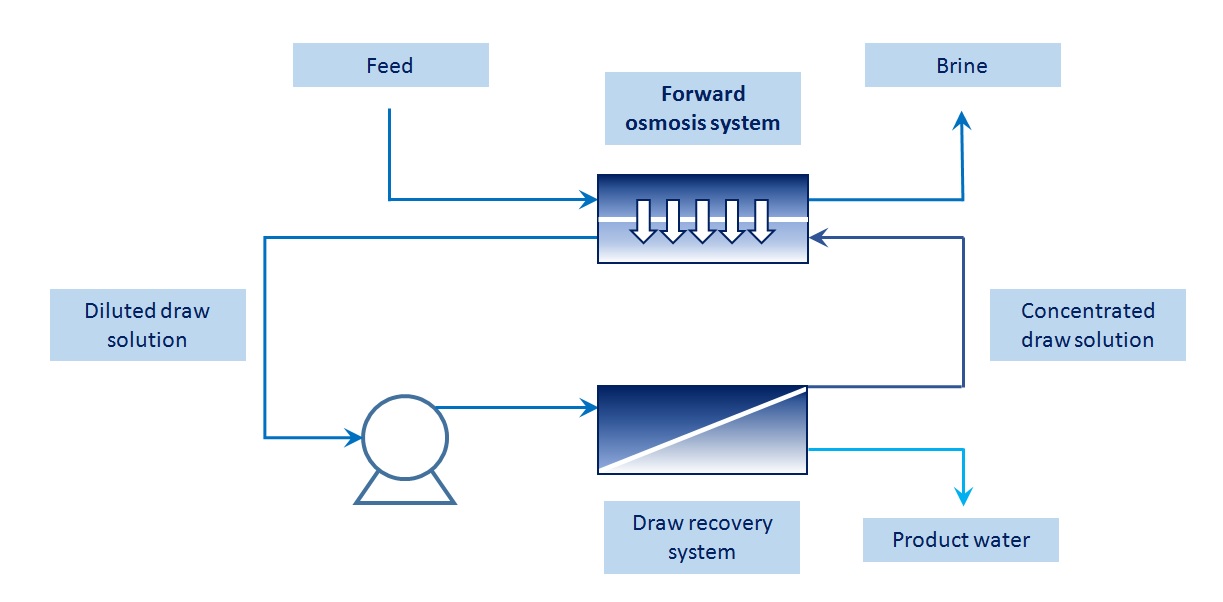Forward Osmosis (FO) is an emerging membrane technology with a number of advantageous features over reverse osmosis. Although currently considered a complementary technology, it has the potential to become the reference option in many applications.
Industrially, forward osmosis is based on the natural phenomenon of a solvent flowing from a region of low osmotic pressure, through a semipermeable membrane to one of high osmotic pressure. This occurs continuously in nature: in plants, trees, bacteria, animal cells, for example.
Forward osmosis can be used to produce high quality water from an aqueous effluent with varying degrees of contamination, a semipermeable membrane and a solution of high osmotic pressure. The process consumes very little energy, as it is carried out at very low pressures and at room temperature, which is one of the most important advantages.
To exploit the natural phenomenon in specific applications, two fluids of different osmotic pressures are used: for example, water from seawater will flow through a membrane to dilute a solution of even greater osmotic pressure. Importantly, this natural phenomenon occurs at room temperature without the need to apply significant pressure. The only external energy used is that required to overcome the frictional resistance on both sides of the membrane (typically 2-3 bar). The high osmotic pressure solution is known as the draw solution and must be simple, safe to handle, easy to prepare and easy to separate from the final product (generally, high quality water).
Forward osmosis has a long list of advantages compared to conventional reverse osmosis. The main one is that it can be carried out at reduced pressures with the consequent energy savings that this represents. Also, forward osmosis membranes are more resistant to fouling and tolerate chlorine better, so cleaning is required less often and is more effective; thereby extending the life of the membrane. However, forward osmosis does not produce high quality water suitable for use in only a single step, since the water produced mixes with the draw solution. Therefore, a second step is required to separate the water produced from the draw solution. In the second stage, the draw solution is regenerated leaving high quality water (Figure 1).
The two processes, forward osmosis and draw solution regeneration, are linked by recirculating the draw solution, which has a higher osmotic pressure than the feed solution.
Pure water flows from the feed solution through the membrane into the concentrated draw solution, thus diluting it. The diluted draw solution can then be concentrated again and pure water extracted in the regeneration system. The combination of the two systems is a key parameter in the system design so that the assembly operation is simple, robust and reliable.
The most important advantages of forward osmosis compared to conventional reverse osmosis are:
- Reduced energy consumption; especially in solutions of high osmotic pressure.
- Less fouling of the membrane.
- Easier and more effective cleaning of the membrane.
- Longer membrane life.
- Lower operating costs.
Forward osmosis can be used in a wide variety of applications, including the treatment of sea water and salt water, water with mineral salts and metals, effluents with a high organic content, effluents with silica and other types of effluents. The most notable examples are:
- Water production in areas with a shortage of water.
- Effluent treatment when legislation requires reuse.
- Implementation of a zero discharge system.
- Treatment of complex effluents, which are difficult to deal with using conventional technologies.
- Viable alternative when reduced energy consumption is required.
Thus, forward osmosis is an emerging technology which is entirely feasible and reliable, and is a clear competitor to conventional reverse osmosis and other separation technologies. To summarise, forced osmosis:
- Is an alternative to the reverse osmosis process, which reduces the energy required and the waste produced.
- Is an emerging alternative technology to conventional thermal evaporation processes.
- Has a wide variety of different applications.
- Is an emerging technology with scope for further development and improved performance.
- Has lower investment and operating costs in zero discharge applications compared to other technologies.
- Will reduce the need for pre-treatment and further increase efficiency as the technology improves.
Condorchem Envitech has designed and implemented optimal forward osmosis systems for its customers. Specifically, there are 3 treatment options using this technology, where the draw solution is a thermolytic one capable of meeting the needs of various customers. The technological options are:
OPTION 1
- Solution focused on the membrane.
- High water recovery, even with effluents producing considerable membrane fouling.
- Treatment for effluents with silica, organic contamination or minerals.
OPTION 2
- Technology considered as the flagship of forward osmosis.
- Maximum recovery of high quality water.
- Treatment of brine containing up to 250,000 ppm of total dissolved solids.
OPTION 3
- Complete recovery of water. Zero discharge solution.
- Combines MBC technology with crystallisers.
- Improved efficiency compared to multi-effect evaporation processes.


